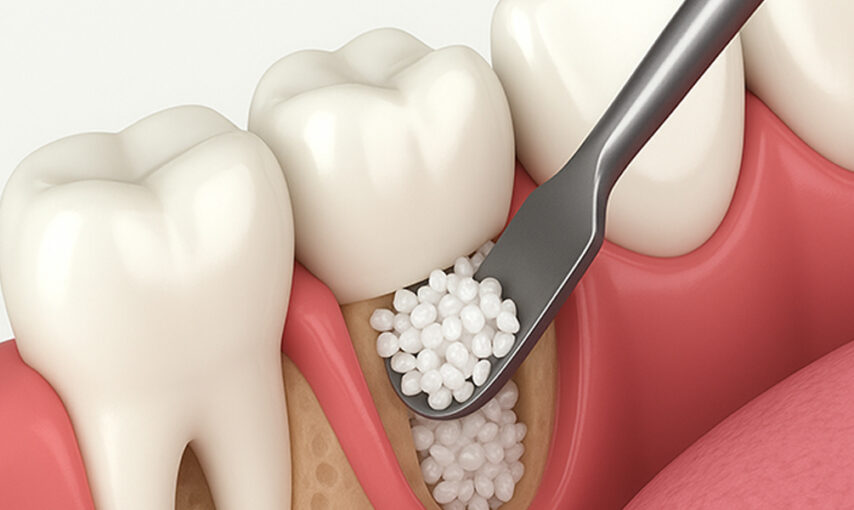Thinking about whether your bone graft is healing right? You’re not the only one. If you’ve searched for a dental clinic offering bone grafting treatment near you, chances are you’re in the recovery phase—and wondering what’s next. The healing journey has clues you can trust. Let’s break down what’s normal, what’s not, and when it’s time to reach out for help.
What Is a Bone Graft and Why Is It Done?
A bone graft is a simple, routine procedure that helps rebuild or strengthen your jawbone. Think of it as a support system. Maybe your bone is weakened from gum disease, an injury, or even tooth loss. A graft helps fix that.
Here’s how it works:
- Your dentist places small bone material into the weakened spot.
- This bone can come from you, a donor, or synthetic sources.
- Over time, your natural bone cells grow around it, making it stronger.
People often get bone grafts to prepare for dental implants. No strong bone = no solid foundation for the implant. That’s where bone grafting services play a big role.
The Typical Healing Timeline
Bone healing takes time. And while everyone’s body is different, there’s a general timeline that must follow:
First Week
- You may notice some swelling, mild discomfort, and light bleeding. That’s expected.
- Stick to soft foods and avoid touching the area.
Week 2–3
- The swelling usually fades.
- New bone cells begin forming—slowly but steadily.
1–3 Months
- The graft starts bonding with your jawbone.
- You may not feel much change, but deep inside, progress is happening.
4–6 Months
- By now, most grafts are stable.
- You might be ready for your implant or the next step.
Healing doesn’t happen overnight. It’s a gradual process. But it’s one your body is designed to handle.
Positive Signs Your Bone Graft Is Healing Properly
I’m not sure how to tell if it’s all going well. Here’s what you should notice as your graft heals:
- Swelling and pain decrease each day. The area should feel more comfortable with time.
- No oozing or strange smells. Clean healing sites don’t release bad odors.
- The tissue looks pink and healthy. No weird colors or patches.
- No loosening. The graft should feel stable, not shifting around.
- Steady energy levels. Your body isn’t fighting infection, so you feel stronger every week.
Short story—if your mouth feels more normal each day, you’re on the right path.
Red Flags and Complications to Watch For
Your body has ways of waving red flags. Pay attention to them.
If you notice any of the following, call your dentist in Munster right away:
- Swelling that gets worse after the third day.
- Sharp or throbbing pain that doesn’t ease with time
- Pus, yellow discharge, or a foul taste
- Fever or chills
- The bone graft site feels loose or moves.
- Numbness or tingling in nearby areas
Don’t ignore these symptoms. They might mean infection or graft failure. Catching issues early can prevent bigger problems.
Tips to Support Bone Graft Healing
You can’t rush healing, but you can help it along. Here are ways to support your body as it recovers:
Eat Right
Fuel your body with foods rich in calcium and protein:
- Scrambled eggs
- Yogurt
- Mashed sweet potatoes
- Cooked greens
Skip hard, crunchy, or spicy stuff for a while. They can irritate the area.
Keep It Clean
Lightly cleanse your mouth with warm salt water after meals. Avoid vigorous swishing. A clean mouth heals faster.
Follow Instructions
Stick to your dentist’s recovery plan. Take meds on time. Show up for follow-ups. If they said Don’t touch the area—don’t touch it.
Rest
Your body needs energy to rebuild bone. Try to avoid stress, get good sleep, and skip intense workouts for a few days.
Avoid Smoking
If you smoke, try to pause during healing. Nicotine slows down bone growth and increases the risk of failure.
Taking care of yourself post-surgery helps the graft do its job—and keeps your recovery smooth.
When to Contact Your Dentist or Surgeon
Don’t wait until something feels really off. If something just doesn’t feel right—even if you can’t describe it—reach out.
Here’s when to make that call:
- Pain lasts beyond the first week or gets worse
- Do you spot anything unusual around the area?
- Bleeding doesn’t stop after light pressure.
- Your stitches come out too early.
- You run out of medication, and symptoms return.
Your dentist isn’t just there for the procedure. They’re your partner in healing.
Final Thoughts
Recovery doesn’t have to be a guessing game. Stay alert, follow your care plan, and trust the signs your body gives. For extra guidance and peace of mind, connect with the trusted team at Family Dental Care. Your smile deserves the best care—schedule a check-up today and keep your healing journey on the right track.


